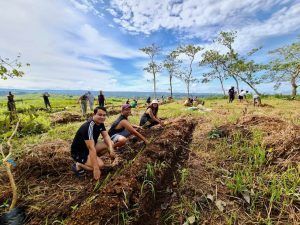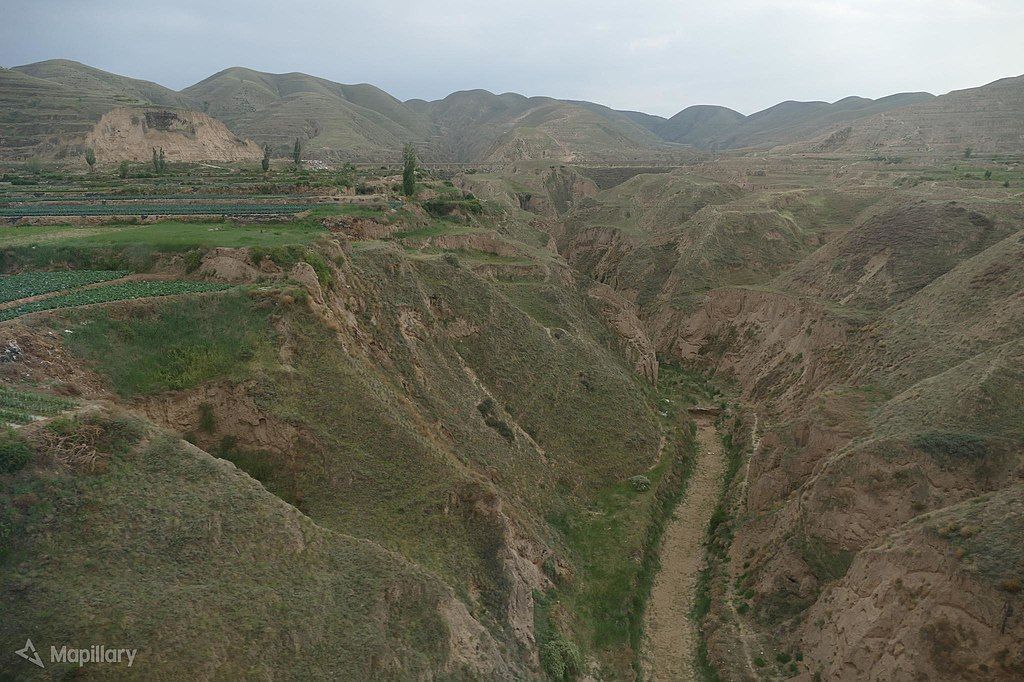During the Soil Regen Summit 2021, John D. Liu transported us to the Loess Plateau in north-central China. Over several centuries, humans profoundly degraded that expansive highland ecosystem, triggering a chronic cycle of extreme poverty for the human inhabitants. As a videographer on assignment in 1995, John was able to witness, from the beginning, the immense project undertaken by the Chinese government and the World Bank Group to restore balanced, functioning ecosystems to the region.
John returned repeatedly over several years to the Plateau to observe and record the progress of the project. Not only did the effort successfully reestablish functioning natural and agricultural systems, it also renewed the health, food security, and livelihoods for over 2.5 million people of the Plateau.
Over the years, John has been involved in several large scale ecosystem restoration projects and has documented many of these, producing a number of inspiring videos. The techniques and successes of the Loess Plateau project were the inspiration for the Ecosystem Restoration Camps organization, which John founded in 2017. At the time of this writing, there are 43 Ecosystem Restoration Camps, involving around 15,000 restoration campers working to restore 5,477 hectares (13,534 acres) in 30 countries on 6 continents.
What Do Ecosystem Restoration Camps Do?
Ecosystem Restoration Camps (ERCs) empower local residents and visiting campers to rejuvenate severely degraded, large-scale ecosystems. Using Regenerative Agriculture methods to increase the organic matter, carbon content, and water retention capacity of the soil, ERCs restore natural functions to the land. These efforts can result in increased biodiversity and carbon sequestration, cleaner watersheds, and cooler overall temperatures. Additionally, the farmers, landowners, and communities involved with the ERCs can enjoy improved food security, health, and livelihoods.
How Can Ecosystem Restoration Camps Accomplish All of This?
ERCs follow a general template for each of their projects, which is tailored to address the traits of the local natural environment and the needs of the local human community.
When needed, the global organization behind the ERCs can connect camp founders with experts to assist with camp design, business models, local and global networking, and, in some cases, they can provide limited funding. Some projects are funded solely by camp founders, and other camps develop a revenue-generating business model to fund their project.
It is essential that each camp extend the project boundaries beyond the fence line of one individual landowner so that neighbors, nearby residents, and other community stakeholders are involved. To further amplify the effects of each project, if the local political situation allows, volunteers from other parts of the world are welcomed to the camp to learn about and participate in the restoration work.
In order to teach people how to restore the land, the camps act as centers of research, training, and innovation. The ERCs strive to instill in the participants a deeper integration into the natural world where they camp and work. The ERC organization website explains, “It is this changed attitude of people – as they start to see themselves as part of nature and not separate from it – that will enable a personal transformation and build the strong foundation for our sustainable success.”
One Example: Camp Regenesis, Philippines
Located on Bohol Island, a popular destination for visitors to the Philippines, the 17 hectare (42 acre) Camp Regenesis sits in the interior highlands of the archipelago. The formerly dense tropical forests of the island were reduced to cover only 27% of the island due to slash and burn farming, overgrazing, and other excessive agricultural activities.

Ecosystem Restoration Camp participants, Carmen, Bohol, Philippines – Photo credit: CAMP REGENESIS/The Regenesis Project.
Camp Regenesis plans to use fire management, water capture and storage, tree and grass planting, System of Rice Intensification, and other regenerative approaches to enable the ecology to return to health and functionality.
The project has already established a nursery of bamboo, fruit trees, and native trees to be planted on the site. Additionally, an earthen water-impounding facility was constructed and will be a gravity-fed irrigation source for replanting projects and rice cultivation.
Campers with expertise in syntropic farming and agroforestry are particularly needed, but the camp also welcomes adventurous folks who can embrace the tropical climate. While the pandemic has slowed the flow of international visitors, the camp continues to host monthly, two-three day restoration/adventure experiences for local residents.
There are plans for construction of a multi-purpose center on the site that will be a training and visitor’s center as well as housing. The Camp Regenesis goals also include creating opportunities for sustainable livelihoods for local human communities, and to someday become the center “for regeneration in the Philippines and eventually the South East Asian region.”
This is just a glimpse into one of the many Ecosystem Restorations Camps–be sure to visit the ERC’s Join a Camp page to explore other projects in diverse climates with wide-ranging goals and methods.
What Can You Do to Support the ERCs?
The goal of the Ecosystem Restoration Camps organization is to expand to 1 million people working in 100 camps worldwide by 2030. There are at least three ways you can help them meet this goal.
Become a Supporter
If you have the means and the motivation, then you can contribute to the ERCs with important financial support. Learn about why your donation is important and how you can provide it.
Join a Camp
If you have time and energy to offer, then consider joining one of the existing camps around the world. Each camp offers different activities, facilities, and training opportunities. Visit the ERC upcoming events calendar for a list of camp experiences available around the world.
Start a Camp
The most profound way you can support the ERCs is to start a camp in your community! Visit the organization’s website to download a roadmap document about becoming a camp. It would be a huge undertaking, but a land- and life-changing one.
ERCs for the Future!
We will keep in touch with the Ecosystem Restoration Camps as they expand their reach around the world in coming years. We also look forward to hearing from John D. Liu this March when he participates in our Soil Regen Summit 2022: Farming for the Future!
Photo credit for header image: ff5722 @ Mapillary.com, CC BY-SA 4.0, via Wikimedia Commons

Heather Boright
Heather lives on a 4-acre homestead in the Willamette Valley of Oregon with her husband and a bunch of leafy, feathered, furry, and wooly macroorganisms. (Plus, of course, countless microorganisms.) She has a BSc in Environmental Education from Western Washington University and loves learning and writing about the science of the natural world.




